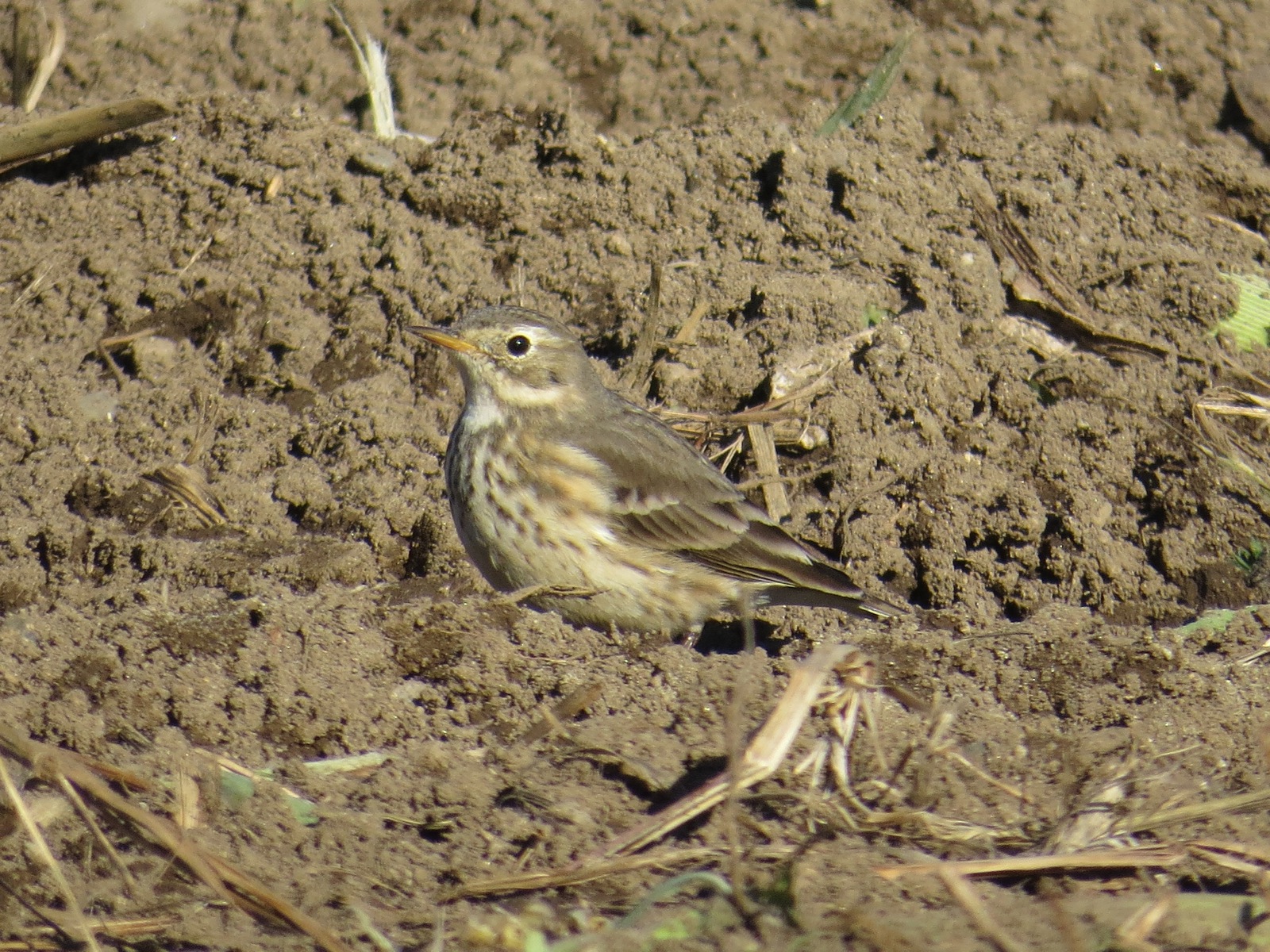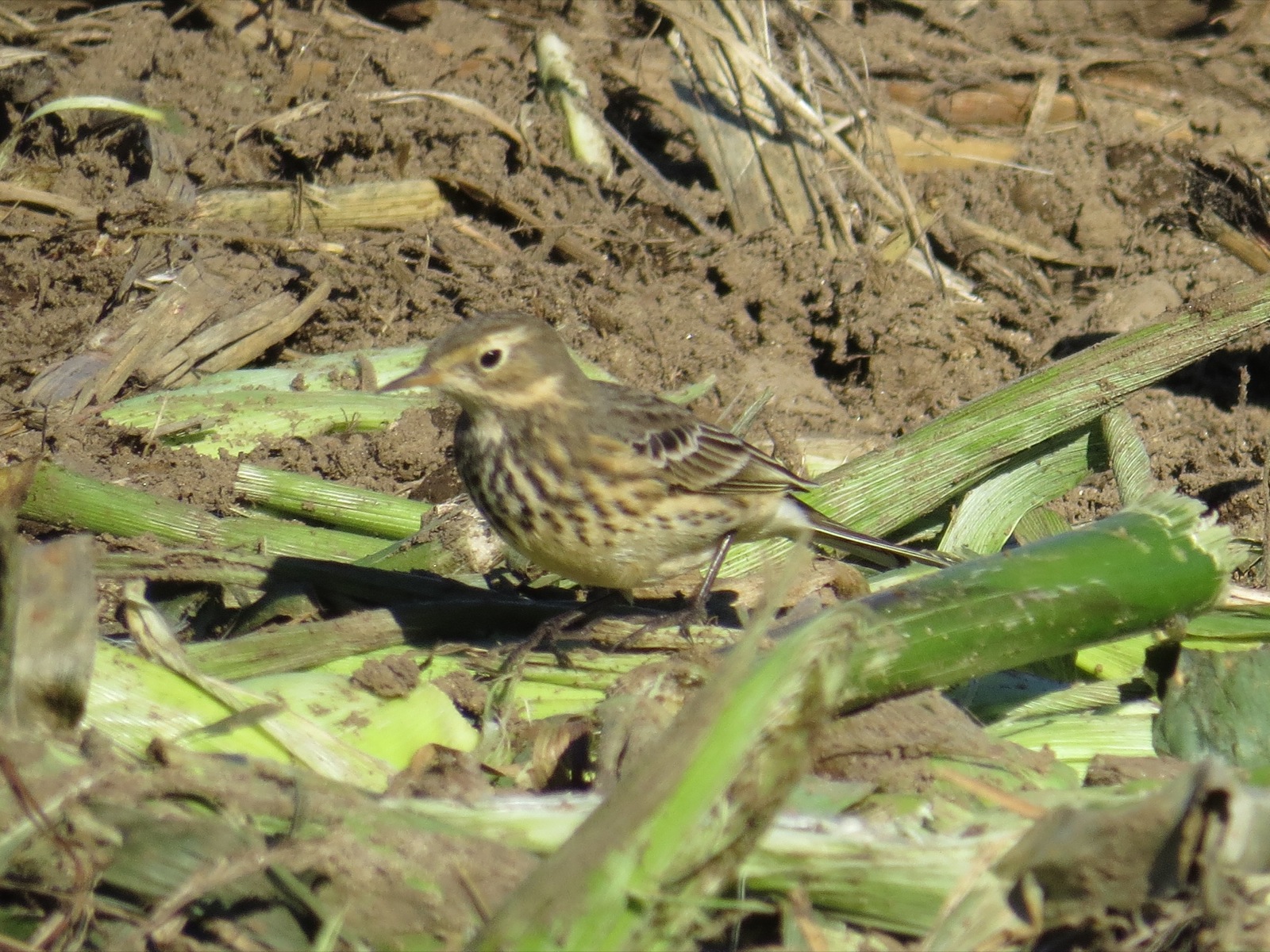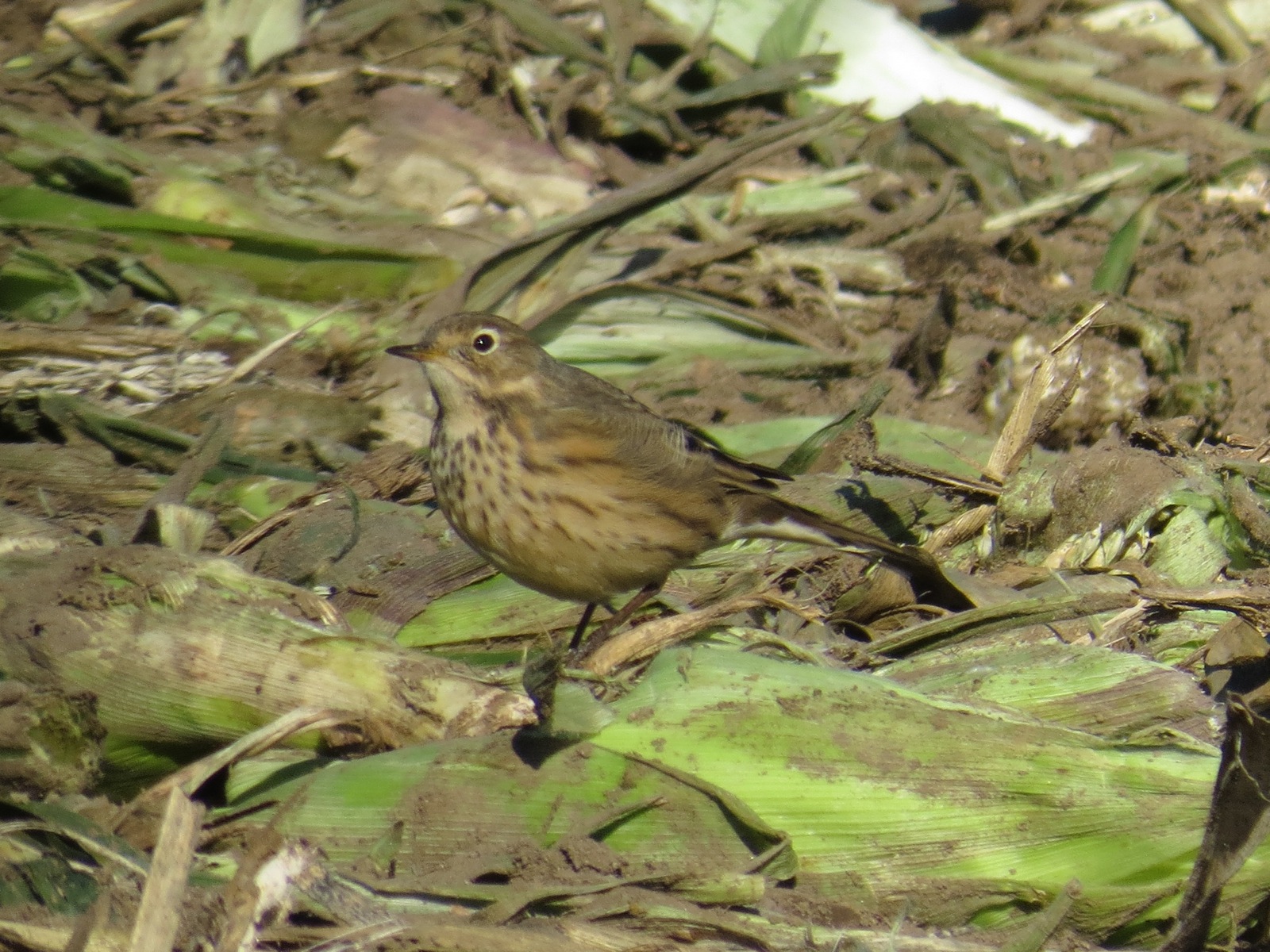I have been noticing variation in American Pipit for many years, and last month I had the opportunity to photograph a small flock. The photos here are of three randomly selected individuals in that flock, all taken within a few minutes on October 27, 2014 in Acton, MA.
The differences in color are striking: compare the color of the underparts (and contrast between flanks and back), the boldness of streaking on the breast, and the pattern on the face.



Are these three different subspecies?
According to the descriptions of accepted subspecies (e.g. in Pyle 1997) I might identify bird B, the most heavily streaked, as eastern rubescens, and bird A, paler, as western pacificus. For bird C, the most richly-colored with sparse streaks, I could at least consider the possibility of montane alticola, although that subspecies should be paler. When I’ve studied pipits in California and Texas in the past that’s just how I’ve handled the variation. The problem is that in Massachusetts, unlike western states, only rubescens is expected based on range, and any of the others should be extremely rare. I know from observations over the last few years that this range of plumage variation is typical of every flock I study, and I doubt that Massachusetts is regularly getting mixed flocks that include pipits from across the continent.
Are they different ages or sexes?
Pyle (1997) mentions only molt limits and relative wear as a means of ageing, and only measurements as a means of sexing. He does suggest that females average heavier streaking than males (in breeding plumage). If that is true then it’s possible that bird B is a female and bird A is a male, but that’s just an idea that needs testing, and it doesn’t explain the differences in overall color or face pattern.
Is this just individual variation?
That’s the only answer left, and maybe it’s the right one. I resist it, though, partly because it calls the described subspecies into question, and partly because this is so much more variation than I see in other species. Think about Savannah Sparrow or Horned Lark, two other small ground-dwelling songbirds, in which tiny differences in overall color and pattern (much smaller than are shown by these three pipits) are consistent across large regions and lead to the naming of multiple subspecies.
If this is just individual variation, and American Pipit is the most variably-colored songbird on the continent, that leads to lots of other questions. And that’s what makes birding so endlessly fun and challenging.


Mr. Sibley …
I understand the color variation problems you are observing. Here at my home in Northern California, we regularly see variations in Song Sparrows, House Finches, and others. My latest observation is the cross-breeding of a Mourning Dove (Zenaida macroura) and either the Eurasian Collared Dov (Streptopelia decaocto) or the Ringed neck Turtle Dove (Streptopelia capicola). Besides raising 2-3 broods every summer, the pairing and mating continued right up to late September / early October.
I am always on the lookout for new, better, different identification guides. The reference you use, Pyle (1977), what is the title, and where could I get one? Secondly, do you know of a guide that is extensive in identifying sparrows? As I said, I have a wide variety at my home, and I’d like to be able to identify the odd-balls.
Bill Mannone
Hi David,
I love conversations that set observations into uncertainty. You’re spot on by saying this is “what makes birding so endlessly fun and challenging.”
I was wondering if you’ve seen similar variation in the American Pipit’s alternate plumage? I can’t recall that I have, but I’ll be looking closely from here forward.
Cheers,
Bryce
Hi,
it’s very interesting that you post something about this. For the last two falls I’ve been banding at l’Observatoire d’Oiseaux de Tadoussac, where we band most of the American Pipits that are banded in North America for the last 10 years or so (we band around 200 pipits every year). Last fall I’ve started to notice this pattern in this species. So I’m pushing the organisation to start taking specific pictures of all the birds and to try to link those variations to the age of the birds. I hope we will find something.
Have a good one
Alex
P.S. sorry for any English mistakes I usualy work in French.
The identification and taxonomy of the Water Pipit / Buff-bellied Pipit (including American and Siberian sso) complexes has long been a difficult problem. He article below discusses some of the difficulties with range, identification and how little we know abouts, especially winter, movements – http://www.surfbirds.com/ID%20Articles/Pipits1.html
A flock of very slender, small birds visited my backyard this afternoon. I thought at first they were some kind of sparrow, but their behavior didn’t fit. They mostly fit the description you give of American Pipits. However, they hopped (not walked). They also seemed to be accompanied by a few European Starling. They moved as a flock, and kept varying their preferred spot in my yard. Most of our vegetation is California native, herbs, and vegetables. They flitted from the California Laurel, to the Brazilian Fejioa, to the citrus trees, to the fresh water circulating pond, to the Carrotwood tree, but always together. They also picked at the concrete patio, I’m guessing for insects. At one point I counted twenty on the patio, but there were many more “waiting in the wings.” I couldn’t count them all. My daughter (an Audubon board member on Vashon Island) thinks they were European starlings. One of them actually had a glossy black coat and yellow beak. But the rest of them were smaller, very slender, and a mottled grey-brown. Do you know if American Pipits travel with European Starlings? Or was it just a coincidence that I saw both species at the same time?
Thanks, Linda
David:
I have been stressing this variability with photos and referencing your study in recent issues of “NS Birds”, which I edit. I have a couple of really pretty far-out Am. Pipit images taken spring 16 that might interest you; if you want them, I’ll send them send them. (e-mail address below.
I think it could easily be individual variation. The photos may be misleading; for example, head angle, and body angle for the streaked flank area creates impressions of subspecies-type variation. In C, the swept-up side feathers give a look of gradual contrast to the upper, and the head tilt detracts its eyebrow compared to the overemphasized eyebrow in B. I think C would be more akin to something like a pine siskin green morph, if that, and would not be strongly suspecting of subspecies. Addressing your second paragraph I’m not sure what you mean by face pattern, and contrast if flanks and back, in a way I know is not the fault of the photo, but I guess you see this in the flocks you say you regularly observe.